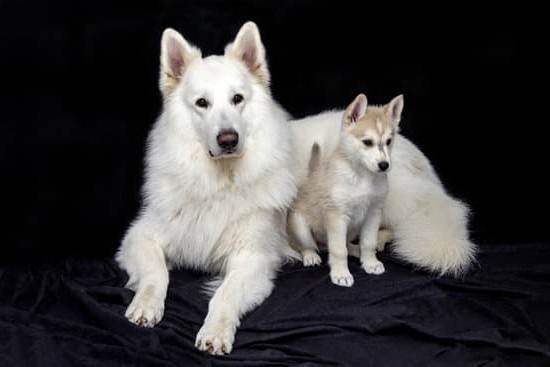Are you interested in learning how to train a dog to retrieve antlers? Antler retrieval is not only a fun activity for your four-legged friend, but it also serves practical purposes for hunters and outdoor enthusiasts. In this article, we will delve into the significance of antler retrieval in dog training and provide you with a comprehensive guide on how to teach your dog this impressive skill.
Antler retrieval has become increasingly popular among dog owners as it combines exercise, mental stimulation, and bonding time with your pet. Not only does it provide a rewarding challenge for the dog, but it also helps keep them engaged and active. Additionally, for those who enjoy shed hunting or deer hunting, having a dog that can retrieve antlers can be incredibly beneficial in locating these natural treasures.
In the following sections, we will cover everything from finding the perfect antler for training and building the foundation with basic commands to introducing scent and advanced training techniques. We’ll also address common challenges that may arise during the training process and offer tips on how to overcome them. So, if you’re ready to embark on this exciting journey with your furry companion, keep reading for a detailed roadmap on how to train a dog to retrieve antlers.
Finding the Perfect Antler for Training
Understanding the Importance of Antler Selection
When it comes to training your dog to retrieve antlers, the first step is finding the perfect antler for training. It’s important to understand that not all antlers are created equal, and choosing the right one can make a significant difference in your dog’s training process. Look for antlers that are relatively fresh, with a strong scent and minimal weathering. The size of the antler should also be appropriate for your dog’s size and breed.
Tips for Finding Quality Antlers
One of the best ways to find quality antlers for training is to source them from reputable suppliers who ethically harvest shed antlers. Additionally, consider reaching out to local hunters or wildlife conservation organizations that may have access to shed antlers. Avoid using antlers that have been treated with chemicals or artificial scents, as these may interfere with your dog’s ability to properly detect natural antler scent.
Recommendations for Antler Types
While any type of antler can be used for training purposes, many trainers recommend starting with deer or elk antlers due to their availability and strong scent properties. Moose and caribou antlers are also suitable options if available in your region. Keep in mind that each type of antler may vary in terms of size, shape, and scent intensity, so it’s essential to consider your dog’s individual preferences and abilities when selecting an antler for training.
Building the Foundation
Before you can begin training your dog to retrieve antlers, it is crucial to establish a solid foundation of basic commands and obedience training. This sets the stage for a successful antler retrieval training process by ensuring that your dog has the necessary discipline and understanding of essential commands.
Start with basic commands such as sit, stay, come, and heel. These commands form the building blocks for more advanced training techniques and are fundamental for effective communication between you and your dog.
Consistency is key when it comes to obedience training. Set aside regular, short training sessions each day to work on these basic commands with your dog. Be patient and use positive reinforcement techniques such as treats or praise to encourage your dog’s progress. It’s important to keep training sessions fun and engaging for your dog to maintain their interest and motivation.
Additionally, obedience training helps strengthen the bond between you and your dog. By establishing yourself as a confident leader through obedience training, you create a sense of trust and respect that will be beneficial throughout the entire antler retrieval training process. A well-behaved, obedient dog is more likely to respond positively to further training, making it easier for them to grasp new skills and concepts as they progress in their abilities.
| Basic Command | Description |
|---|---|
| Sit | Teaches the dog to sit on command. |
| Stay | Teaches the dog to stay in one place until released. |
| Come | Encourages the dog to come when called. |
Introducing Scent
Once your dog has mastered basic commands and obedience training, it’s time to move on to the next step in training them to retrieve antlers: introducing scent. This is a crucial part of the process, as it teaches your dog to use their sense of smell to find and retrieve antlers effectively. In this phase of training, you will be laying the groundwork for your dog’s ability to pick up on and follow the scent of antlers.
To begin preparing your dog for the retrieval process, it’s essential to familiarize them with the scent of antlers. Start by placing a small amount of deer or elk antler scent on a cloth or cotton ball and allowing your dog to sniff it. You can also incorporate this scent into games or activities, such as hiding the scented item and encouraging your dog to find it using only their sense of smell.
As your dog becomes more adept at recognizing and following the scent of antlers, you can gradually increase the difficulty level by adding distractions or obstacles. This will help sharpen their focus and strengthen their ability to stay on track even when there are other scents present. Consistent practice and positive reinforcement during this phase will help solidify your dog’s understanding of how to use their sense of smell effectively in retrieving antlers.
Training Techniques
Training your dog to retrieve antlers can be a fun and rewarding activity for both you and your pet. However, it requires patience, time, and dedication. The key to successful antler retrieval training lies in using the right techniques. Here is a step-by-step guide to help you train your dog to retrieve antlers effectively.
First, start with basic commands and obedience training. Your dog should be able to follow simple commands such as sit, stay, and come before starting antler retrieval training. This foundation will make it easier for your dog to understand and execute the retrieval process.
Next, introduce your dog to the scent of antlers. Place an antler in an area where your dog can easily find it, and encourage them to sniff it out. You can also use scent-based training aids designed specifically for antler retrieval training.
Once your dog is familiar with the scent of antlers, begin incorporating the retrieval process into their obedience training. Start by throwing a small antler a short distance away from your dog and use the “fetch” command to encourage them to bring it back to you. Gradually increase the distance and complexity of the retrieves as your dog becomes more confident with the process.
It is important to reward your dog with treats or praise every time they successfully retrieve an antler. Positive reinforcement will motivate them to continue practicing and refining their retrieval skills. Consistency, patience, and positive reinforcement are key elements in achieving success in training a dog to retrieve antlers.
| Training Techniques | Step-by-Step Guide |
|---|---|
| Basic Commands/Obedience Training | Introduce Your Dog to Antler Scent |
| Incorporate Retrieval into Obedience Training | Reward Your Dog for Successful Retrieves |
Overcoming Challenges
Resistance to Picking Up Antlers
One common issue in antler retrieval training is when dogs show resistance to picking up antlers. This may be due to the unfamiliar scent or texture of the antlers. To address this issue, it’s important to go back to basic obedience training and reinforce the “fetch” command. Start by using a familiar object, such as a tennis ball, and gradually introduce the antler as the dog becomes more comfortable with retrieving.
Lack of Interest in Antlers
Some dogs may simply show a lack of interest in antlers, making it challenging for them to engage in retrieval training. In this case, it’s important to make the training sessions more rewarding and enjoyable for the dog. Use positive reinforcement, such as treats or praise, when the dog shows any interest in the antlers. Additionally, incorporating play into the training process can help spark the dog’s interest in retrieving antlers.
Distraction and Lack of Focus
Another common challenge is distraction and lack of focus during training sessions. Dogs may become easily distracted by their surroundings or lose focus on the task at hand. To address this issue, it’s important to start training in a quiet and controlled environment before gradually introducing distractions. Keep training sessions short and engaging, using high-value treats or toys to keep your dog focused on the task of retrieving antlers.
By identifying these common challenges and implementing effective strategies to address them, you can successfully train your dog to retrieve antlers while strengthening your bond through positive reinforcement and patience.
Advanced Training
Once your dog has mastered the basics of antler retrieval, it may be time to take their skills to the next level with advanced training techniques. This stage of training focuses on honing your dog’s abilities and introducing more complex scenarios to challenge them further. Here are some tips for advancing your dog’s antler retrieval skills:
- Implementing Distractions: Introduce distractions such as other animals, loud noises, or unfamiliar scents to test your dog’s focus and ability to retrieve antlers in various environments.
- Increasing Distance: Gradually increase the distance from which you throw the antlers for your dog to retrieve. This will improve their tracking abilities and strengthen their overall retrieval skills.
- Adding Height Variations: Practice throwing antlers from elevated positions or placing them in elevated locations for your dog to retrieve. This will encourage them to look up and down for antlers, mimicking real-life hunting scenarios.
Additionally, consider incorporating more complex scent trails during training sessions. This can involve laying out longer and more convoluted scent paths for your dog to follow before reaching the antler. By challenging their olfactory senses and tracking skills, you can elevate their proficiency in locating and retrieving antlers.
Moreover, advanced training may also involve integrating obedience commands with the retrieval process. Teach your dog to wait patiently before retrieving the antler, only doing so when given a specific release command. This level of control will enhance their discipline and responsiveness during retrieval tasks, making them a more reliable partner in outdoor activities such as shed hunting or tracking game.
Reinforcement and Maintenance
After successfully training your dog to retrieve antlers, it is important to continue reinforcing and maintaining their skills to ensure they stay sharp and reliable. Consistent practice and reinforcement will not only help solidify your dog’s abilities but also strengthen the bond between you and your pet. Regular maintenance of their retrieval skills will keep them engaged, mentally stimulated, and physically fit.
One way to reinforce and maintain your dog’s antler retrieval skills is through continued obedience training. Incorporating antler retrieval into regular obedience sessions can help reinforce the commands they have learned and keep their skills sharp. This could include practicing recall, sit-stay, or leave it commands while incorporating antler retrieval into the routine.
In addition to obedience training, it is crucial to provide regular practice opportunities for your dog to retrieve antlers. This could involve hiding antlers in different locations, varying the difficulty of the search, or using scent trails to keep their tracking skills sharp.
Making these practice sessions fun and rewarding will ensure that your dog remains enthusiastic about retrieving antlers and continues to improve their skills over time. Remember that consistency is key in reinforcing and maintaining your dog’s retrieval abilities.
Conclusion
In conclusion, training your dog to retrieve antlers can be a rewarding and fulfilling experience for both you and your furry companion. It not only provides mental stimulation for your dog but also strengthens the bond between the two of you as you work together towards a common goal. Celebrate the progress and achievements that you and your dog have made throughout the training process.
As you witness your dog confidently and skillfully retrieve antlers, take pride in the time and effort you have invested in training. The patience, consistency, and positive reinforcement that you have provided have paid off, resulting in a well-trained and eager retriever. This accomplishment is a testament to the strong relationship you have built with your dog through training, communication, and trust.
Furthermore, continue to nurture your dog’s new abilities by incorporating regular practice sessions into your routine. By reinforcing their retrieval skills and maintaining their enthusiasm for the activity, you can ensure that they continue to excel in this specialized task. Whether it’s for practical purposes or simply for the joy of witnessing their talents, celebrate the unique bond that has been formed through your shared experiences in antler retrieval training.

Welcome to the blog! I am a professional dog trainer and have been working with dogs for many years. In this blog, I will be discussing various topics related to dog training, including tips, tricks, and advice. I hope you find this information helpful and informative. Thanks for reading!





